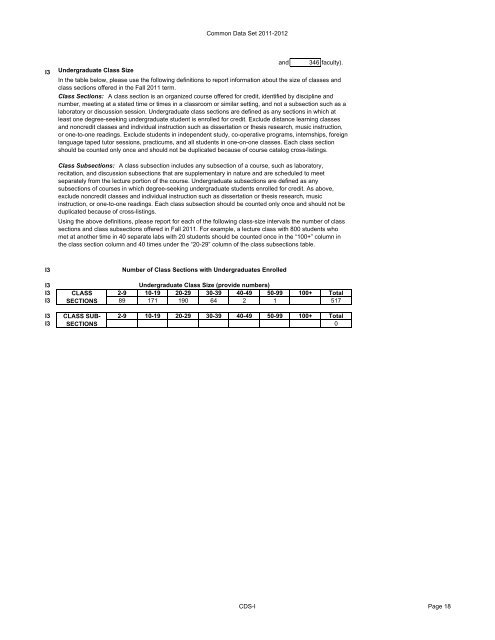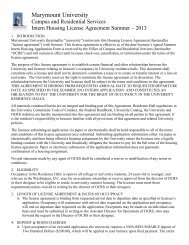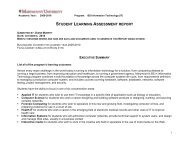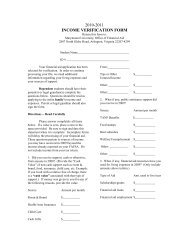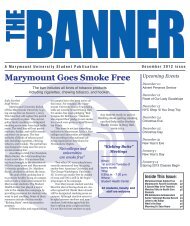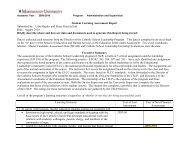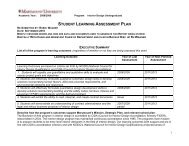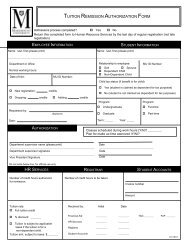A. General Information - Marymount University
A. General Information - Marymount University
A. General Information - Marymount University
You also want an ePaper? Increase the reach of your titles
YUMPU automatically turns print PDFs into web optimized ePapers that Google loves.
Common Data Set 2011-2012<br />
I3<br />
Undergraduate Class Size<br />
and<br />
346 faculty).<br />
In the table below, please use the following definitions to report information about the size of classes and<br />
class sections offered in the Fall 2011 term.<br />
Class Sections: A class section is an organized course offered for credit, identified by discipline and<br />
number, meeting at a stated time or times in a classroom or similar setting, and not a subsection such as a<br />
laboratory or discussion session. Undergraduate class sections are defined as any sections in which at<br />
least one degree-seeking undergraduate student is enrolled for credit. Exclude distance learning classes<br />
and noncredit classes and individual instruction such as dissertation or thesis research, music instruction,<br />
or one-to-one readings. Exclude students in independent study, co-operative programs, internships, foreign<br />
language taped tutor sessions, practicums, and all students in one-on-one classes. Each class section<br />
should be counted only once and should not be duplicated because of course catalog cross-listings.<br />
Class Subsections: A class subsection includes any subsection of a course, such as laboratory,<br />
recitation, and discussion subsections that are supplementary in nature and are scheduled to meet<br />
separately from the lecture portion of the course. Undergraduate subsections are defined as any<br />
subsections of courses in which degree-seeking undergraduate students enrolled for credit. As above,<br />
exclude noncredit classes and individual instruction such as dissertation or thesis research, music<br />
instruction, or one-to-one readings. Each class subsection should be counted only once and should not be<br />
duplicated because of cross-listings.<br />
Using the above definitions, please report for each of the following class-size intervals the number of class<br />
sections and class subsections offered in Fall 2011. For example, a lecture class with 800 students who<br />
met at another time in 40 separate labs with 20 students should be counted once in the “100+” column in<br />
the class section column and 40 times under the “20-29” column of the class subsections table.<br />
I3<br />
Number of Class Sections with Undergraduates Enrolled<br />
I3<br />
Undergraduate Class Size (provide numbers)<br />
I3 CLASS 2-9 10-19 20-29 30-39 40-49 50-99 100+ Total<br />
I3 SECTIONS 89 171 190 64 2 1 517<br />
I3 CLASS SUB- 2-9 10-19 20-29 30-39 40-49 50-99 100+ Total<br />
I3 SECTIONS<br />
0<br />
CDS-I Page 18


